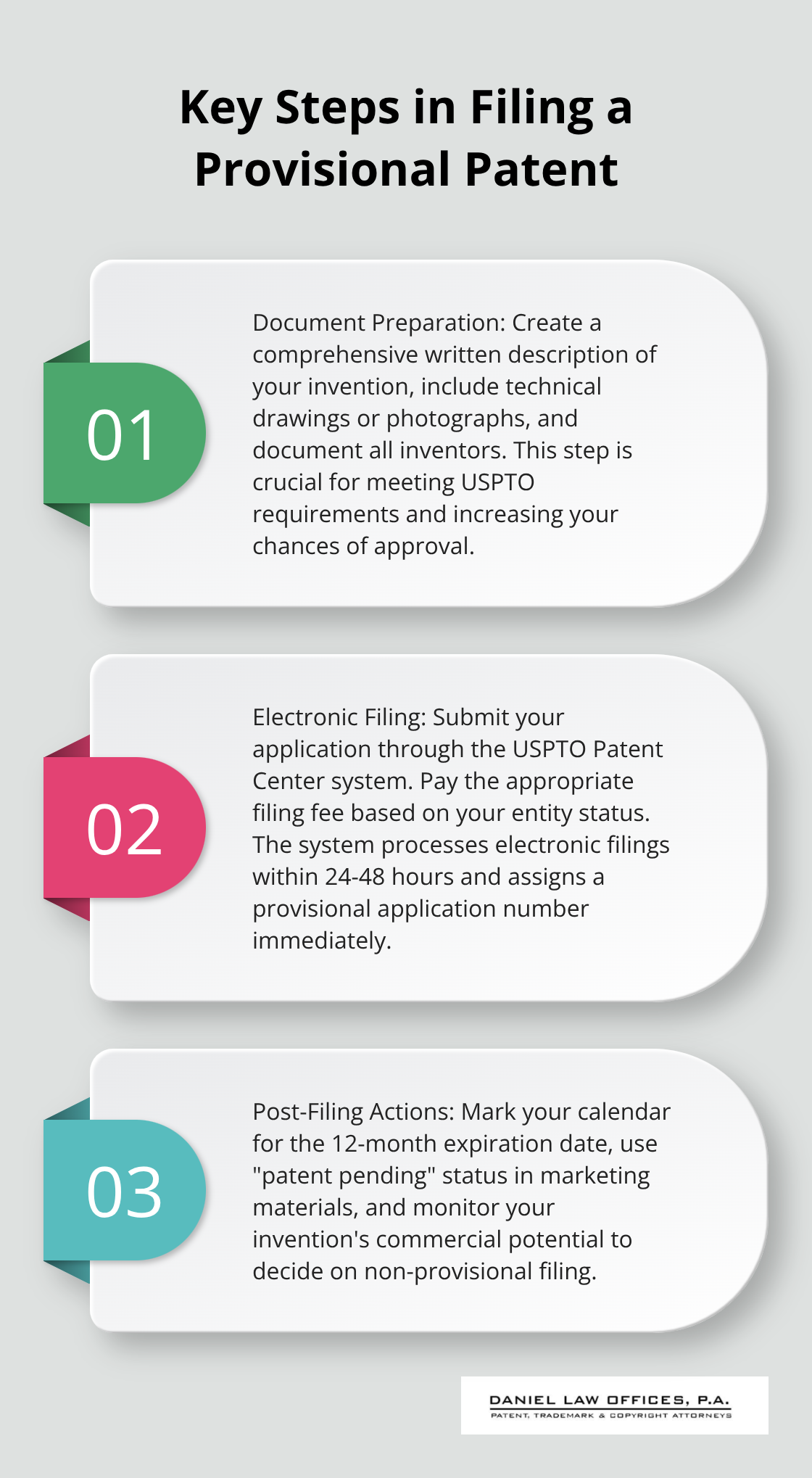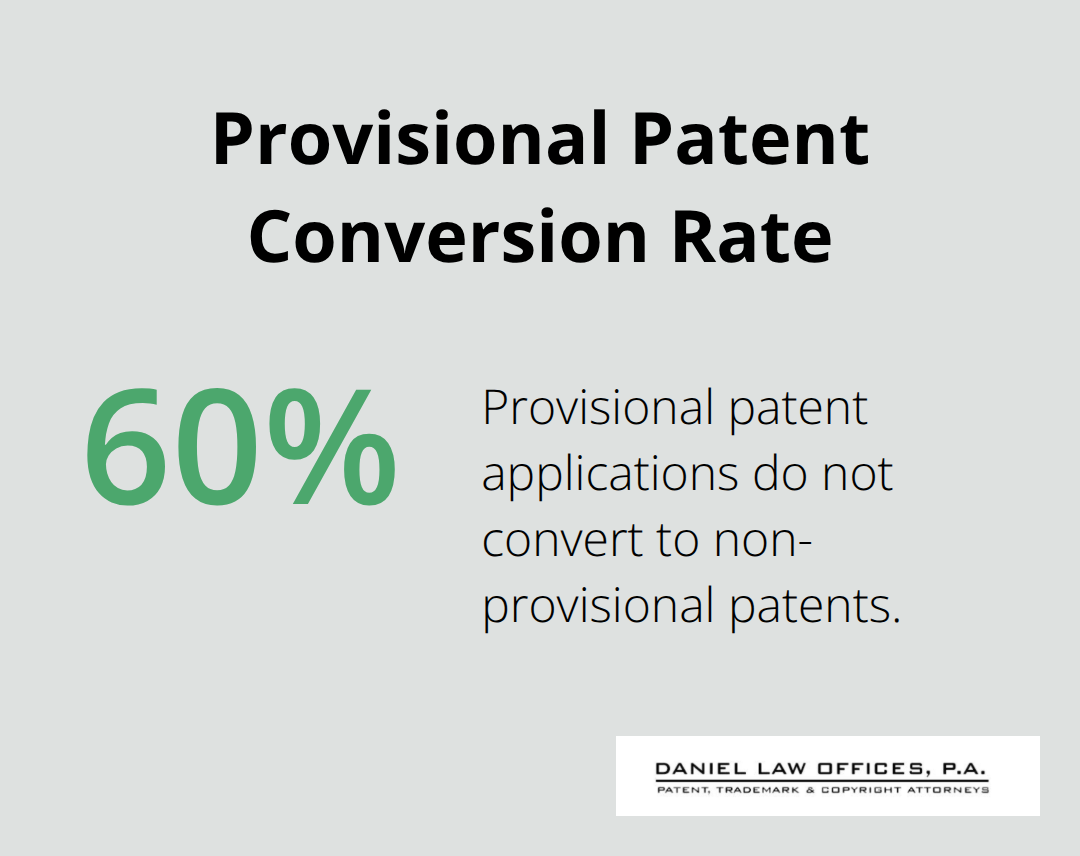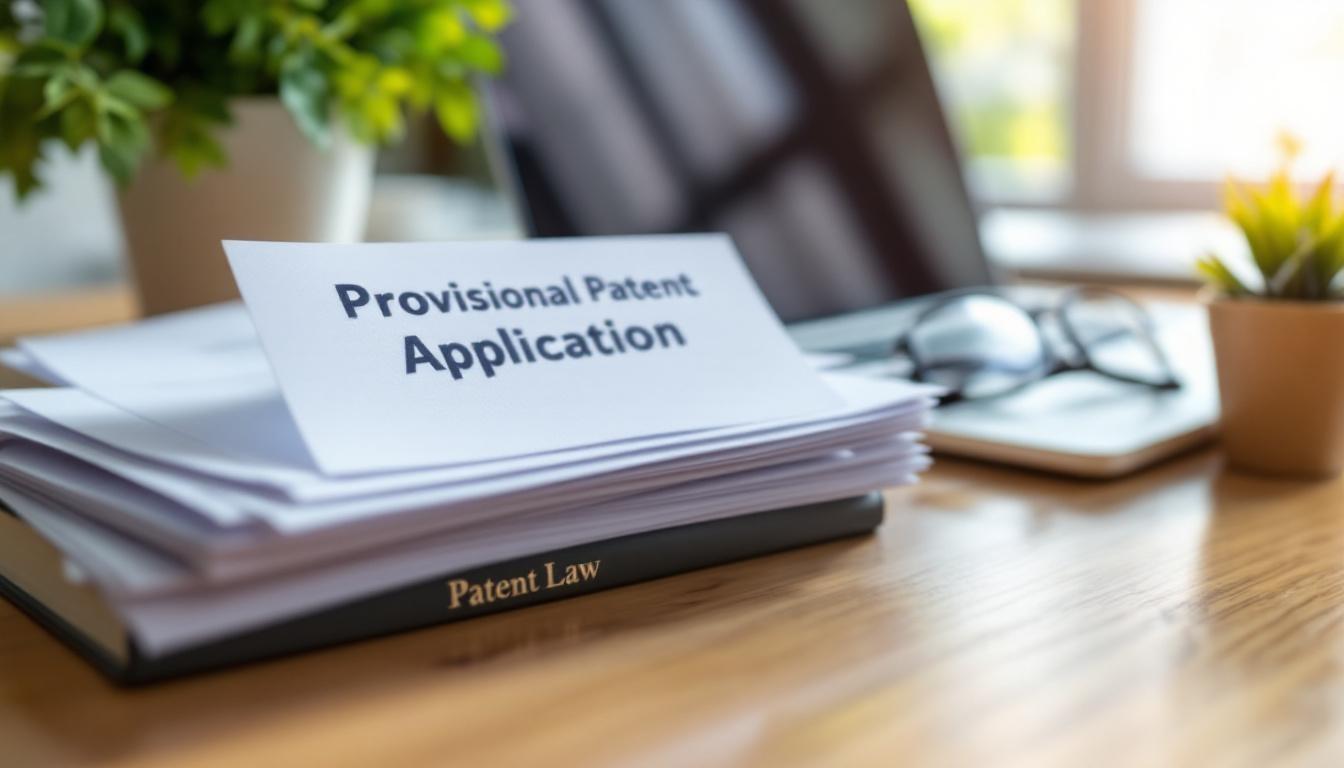Provisional Patent Filing Process in Orlando, Florida Explained
Inventors and entrepreneurs often need patent protection quickly without the high costs of full patent applications. The provisional patent filing process offers a strategic solution for securing early filing dates while developing your invention further.
At Daniel Law Offices, P.A., we guide clients through this streamlined approach that provides one year of patent pending status. This process allows inventors to test market viability and seek funding before committing to expensive non-provisional applications.
What Makes Provisional Patents Different
A provisional patent application serves as a placeholder filing with the USPTO that establishes your invention date without examination. This document requires a written description of your invention and any necessary drawings, but eliminates the formal patent claims and prior art searches that non-provisional applications demand. The USPTO charges $75 for micro entities, $150 for small entities, and $300 for large entities as filing fees.

The One-Year Window That Changes Everything
Your provisional application remains active for exactly 12 months from the filing date, and this period cannot be extended under any circumstances. Within this timeframe, you must file a corresponding non-provisional application to maintain your priority date. The USPTO allows a 14-month grace period with a petition for unintentional delay, but missing this deadline means you lose your original filing date permanently. Applications with professional preparation have a 30% higher likelihood of approval according to USPTO data, which makes proper documentation during this critical year essential.
Format Flexibility vs Structure Requirements
Provisional applications accept various content formats (photographs, sketches, and technical drawings) without strict formatting rules. Non-provisional applications demand precise patent claims, detailed prior art searches, and formal USPTO formatting standards. Your provisional filing can include multiple inventions in a single application without additional fees if it stays under 100 pages, while non-provisional applications require separate filings for distinct inventions. This flexibility allows faster preparation but demands thorough documentation since no new material can be added after filing.
Patent Pending Status and Market Protection
Once you file your provisional application, you gain “patent pending” status that provides immediate market advantages. This status allows you to market your invention while you develop it further and seek funding opportunities. The provisional filing also establishes your invention as prior art, which strengthens your claim against competing applications. However, incorrectly labeling an invention as “patent pending” can result in fines of up to $500 per infraction under U.S. law.
The next step involves preparing the comprehensive documentation needed for your provisional application filing.
How Do You Actually File a Provisional Patent

Document Preparation That Matters
Your provisional patent application needs three essential components that determine your success. Start with a comprehensive written description that explains how to make and use your invention in sufficient detail for someone skilled in the field to replicate it. The USPTO requires this description to meet Section 112(a) standards, which means vague or incomplete explanations will fail. Include technical drawings, photographs, or CAD designs that illustrate every functional aspect of your invention. Applications with professional drawings have a 20% higher approval rate without major revisions (according to USPTO data). Create detailed documentation of all inventors who contributed to the invention, as each must be named in the application.
Electronic Filing Through USPTO Patent Center
File your application electronically through the USPTO Patent Center system, which offers secure submission and immediate confirmation. The system accepts various file formats including PDF, JPEG, and TIFF for drawings. Submit your filing fee based on your entity status: micro entities pay $75, small entities pay $150, and large entities pay $300. The USPTO processes electronic filings within 24-48 hours and assigns a provisional application number immediately upon successful submission. Applications that exceed 100 pages incur additional fees, so organize your content efficiently to avoid extra costs.
Critical Post-Filing Actions
Mark your calendar for the 12-month deadline when your provisional application expires, as this date cannot be extended. Set reminders at six months and nine months to begin preparation of your non-provisional application. You can now legally use patent pending status in marketing materials, but incorrect labeling of products can result in $500 fines per violation. Monitor your invention’s commercial potential during this period to determine whether filing a non-provisional application justifies the additional investment of $1,600 to $3,200 in fees and attorney costs.
The benefits and limitations of provisional patents will help you decide whether this approach fits your invention strategy and budget constraints.
What Are the Real Benefits and Risks
Cost Savings That Actually Matter
Provisional patent applications deliver immediate financial advantages that make patent protection accessible to inventors with limited budgets. The USPTO charges just $75 for micro entities compared to $320 for non-provisional utility patents, which creates 76% savings on filing fees alone. Attorney preparation costs range from $1,500 to $3,500 for provisional applications versus $5,000 to $10,000 for non-provisional filings (according to the American Intellectual Property Law Association). This cost structure allows inventors to secure patent pending status while they preserve capital for product development and market testing. Applications under 100 pages avoid excess page fees, which makes thorough documentation affordable for most inventors.
The Critical 12-Month Reality Check
Your provisional application provides exactly one year of protection before it expires permanently. This timeframe creates both opportunity and pressure for inventors. The period allows sufficient time to test market demand, secure funding, and refine your invention before you commit to expensive non-provisional filing costs. However, approximately 60% of provisional applications never convert to non-provisional patents according to USPTO statistics. This often happens because inventors discover limited market potential or face funding challenges during the one-year period.

Hidden Limitations You Must Know
The 12-month deadline cannot be extended under any circumstances, and you lose your priority date completely if you miss it. Smart inventors use this period strategically to validate their invention’s commercial viability rather than treat it as guaranteed protection. The one-year window forces decisive action on patent strategy while it provides breathing room for business development. Public disclosure of your invention during this period may result in lost patent rights if you fail to file a corresponding non-provisional application within the deadline.
Final Thoughts
The provisional patent filing process offers inventors an affordable pathway to secure patent pending status while they develop their inventions and test market viability. This strategic approach costs just $75 to $300 in USPTO fees and provides one full year to evaluate commercial potential before you commit to expensive non-provisional applications. Success depends on thorough documentation that meets USPTO requirements and careful timeline management within the non-extendable 12-month window.
Professional legal assistance becomes valuable when your invention shows strong market potential or involves complex technical details that require precise patent language. We at Daniel Law Offices, P.A. guide inventors through comprehensive patent searches, application drafts, and the entire USPTO prosecution process. Our registered patent attorney helps clients navigate intellectual property complexities while we protect their valuable innovations.
Your next steps involve evaluation of your invention’s commercial viability during the provisional period and preparation for non-provisional filing if market testing proves successful. This decision timeline forces strategic thinking about patent protection while it preserves capital for business development activities. The one-year window creates both opportunity and pressure that smart inventors use to validate their invention’s market potential (rather than treat it as guaranteed protection).

